I’ve taken some time in lockdown to photograph the flowers in my garden in human and bee colour vision using ultraviolet photography. All of these images are shown in human colour vision (sRGB) on the left, and in honeybee colour vision on the right. Honeybee eyes have three receptor types, sensitive to green (MW), blue (SW) and ultraviolet (UV) respectively, and these are shown in place of human RGB. Images were processed using the micaToolbox I have developed along with others.
Below each image there is also a greyscale representation of each channel; from left to right human LW, MW, SW, then honeybee MW, SW and UV.
I took all of these images with either a full-spectrum converted Sony A7, or a full-spectrum Sony A6000, using a lens I designed and built myself for high transmission from 300-700nm with no focus shift. Visible images were taken with a Baader UV/IR blocking filter and UV images with a Baader venus-U filter.
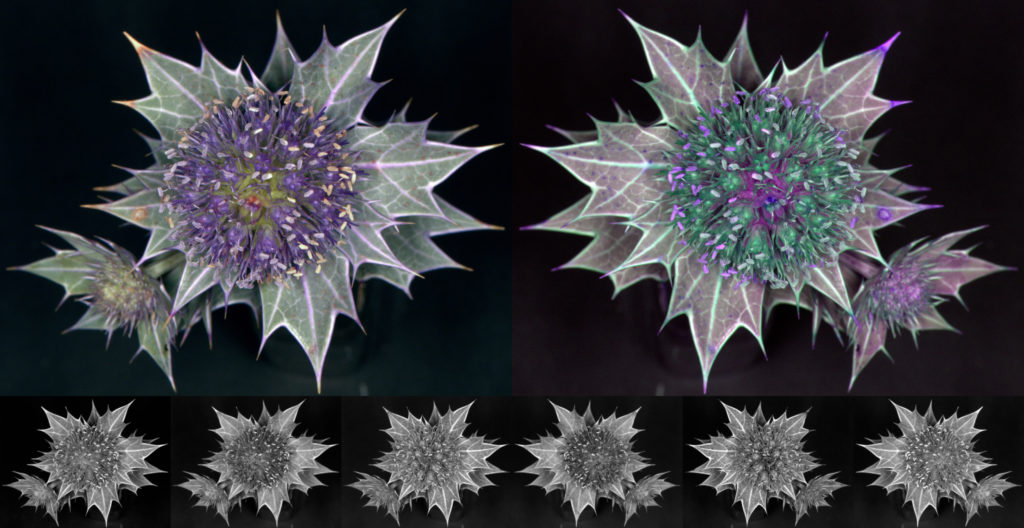
Sea holly (Eryngium maritimum). I’ve always wanted to photograph this in UV due to the dusty blue look of the leaves. The blue sections of the flower absorb UV, but the anthers and leaves reflect UV. 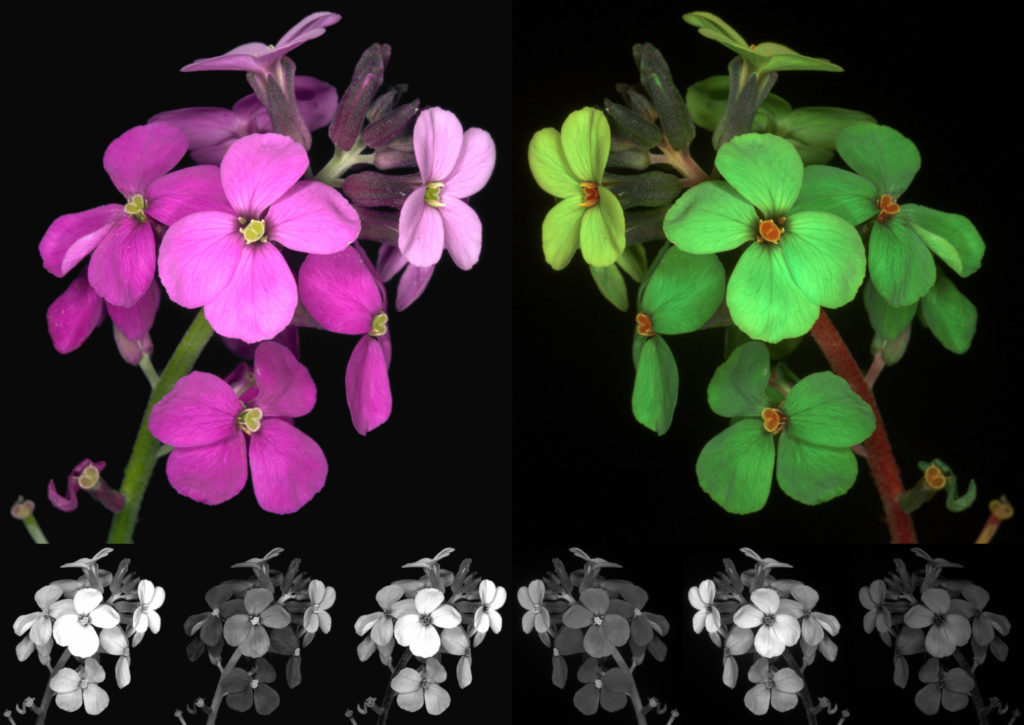
Perennial wallflower (Erysimum ‘Bowles’s Mauve’). Attracts quite a few pollinators, but doesn’t do much in UV. 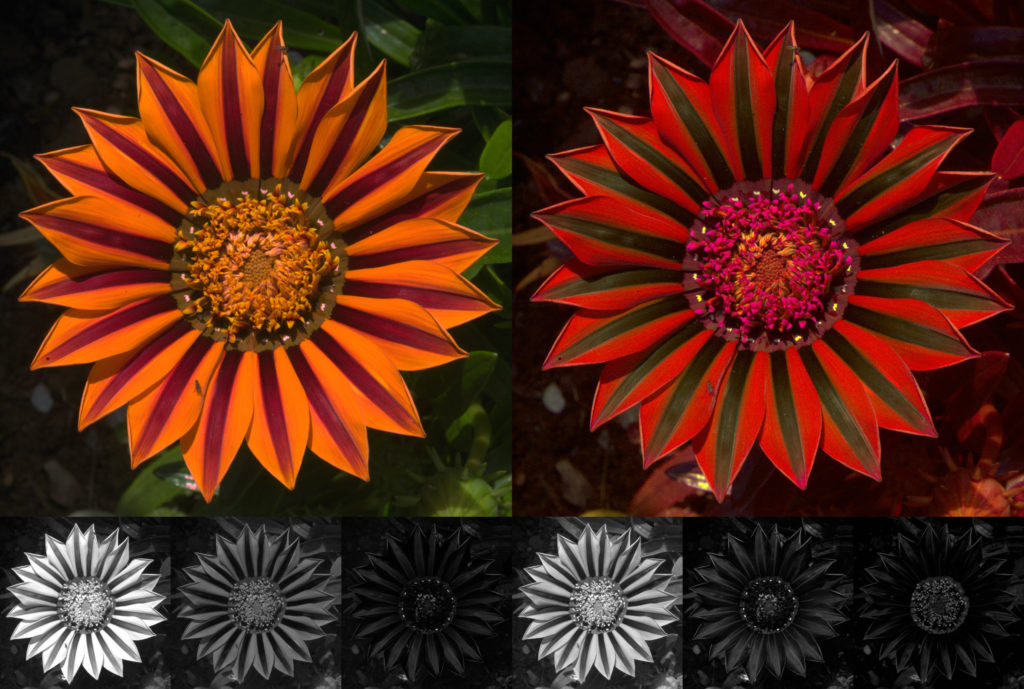
Gazania (“Tikal”?) The petals strongly absorb UV, but the anthers do reflect some UV to create that purple look for bee-vision. 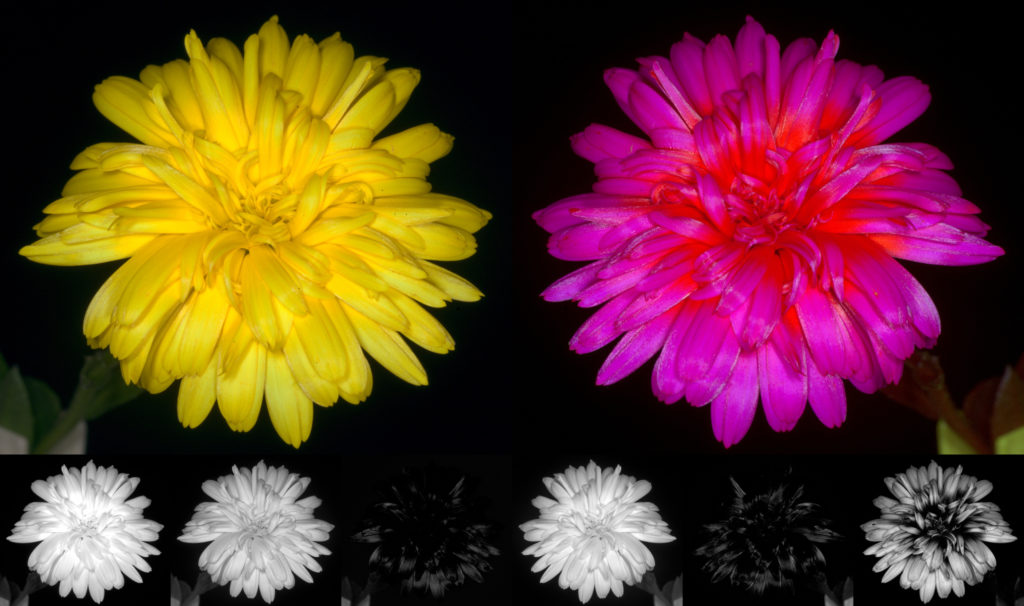
Marigold (Calendula ‘Power Daisy’), This looks much like other daisy-family flowers such as dandelions, with hidden UV markings where the centre of the petals absorb UV, but the outer sections reflect it. 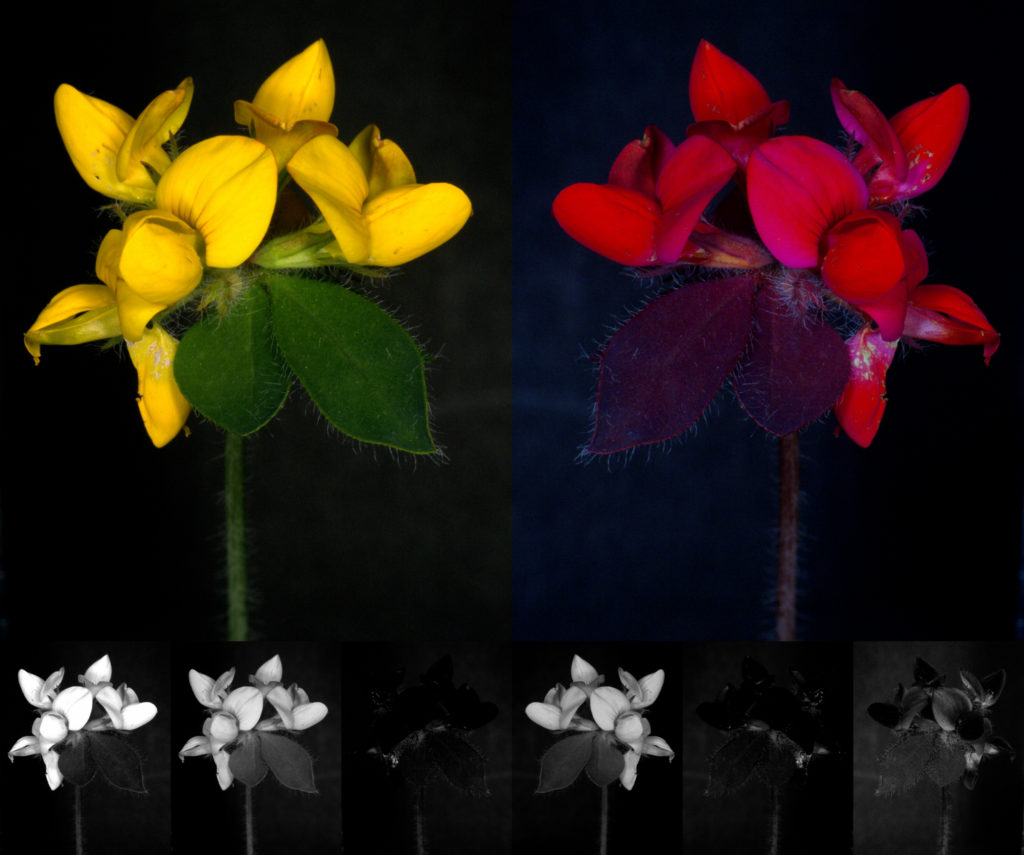
Bird’s foot trefoil (Lotus corniculatus). As with some other pea family (such as gorse), the flowers have hidden UV markings where the upper section of the flower reflects UV, but the lower section absorbs UV. 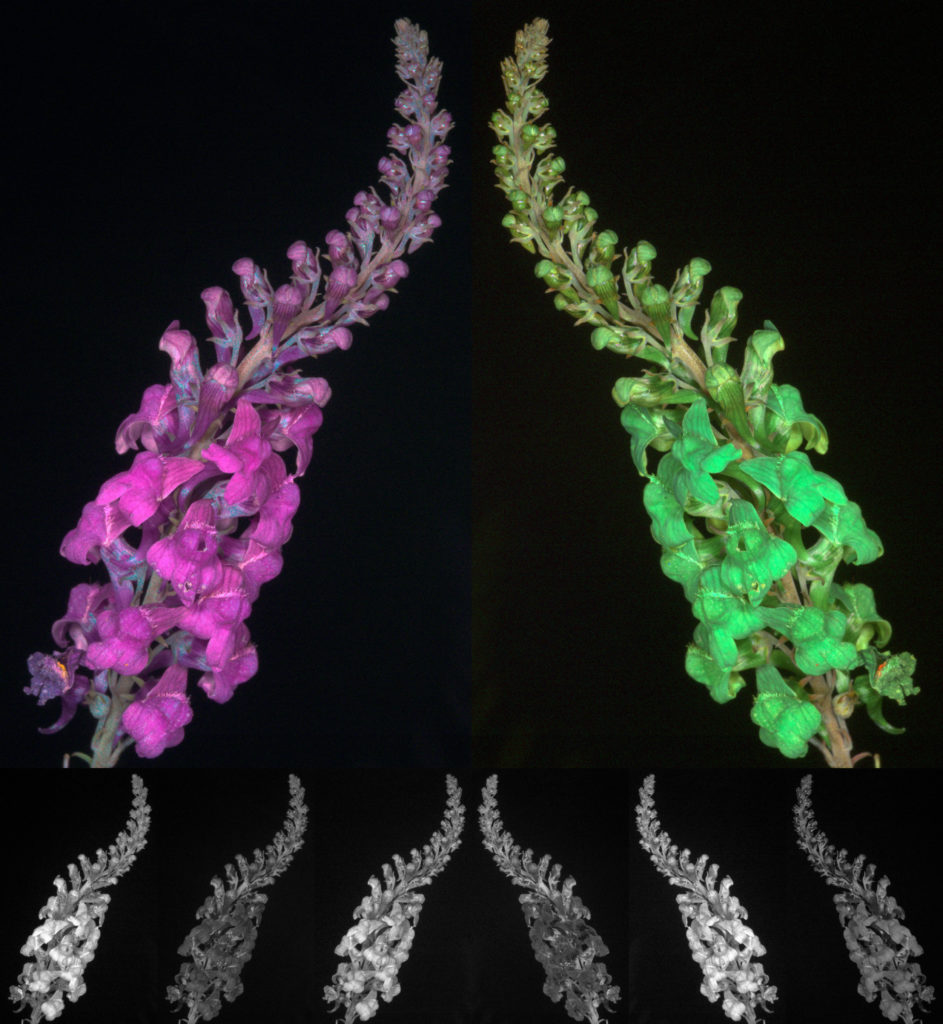
Purple toadflax (Linaria purpurea). One of my favourite flowers, and great for pollinators, but really not much of interest in UV. 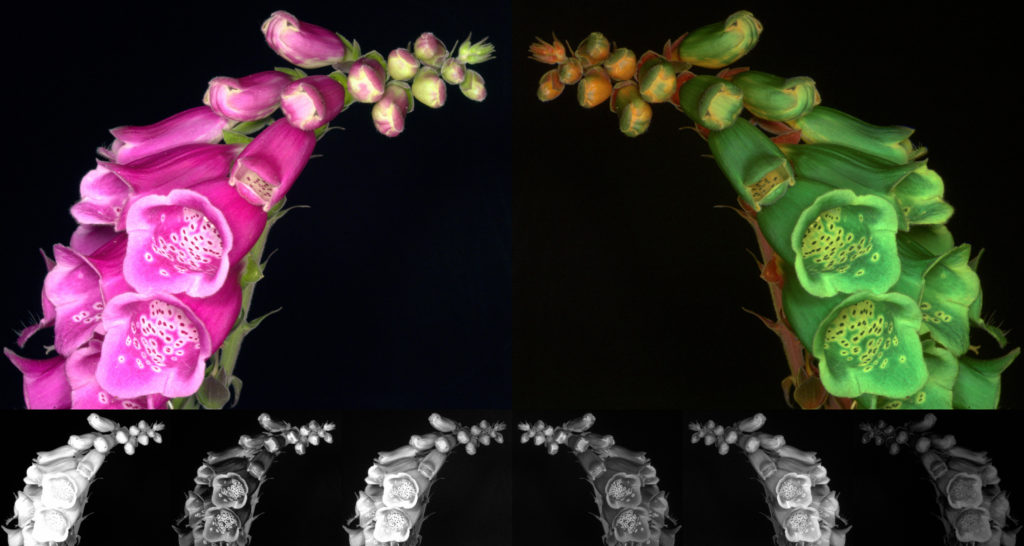
Foxglove (Digitalis purpurea). Not much going on in UV. As with many pink-purple flowers this appears to be targetting the SW receptor in bees, strongly absorbing in MW and UV. 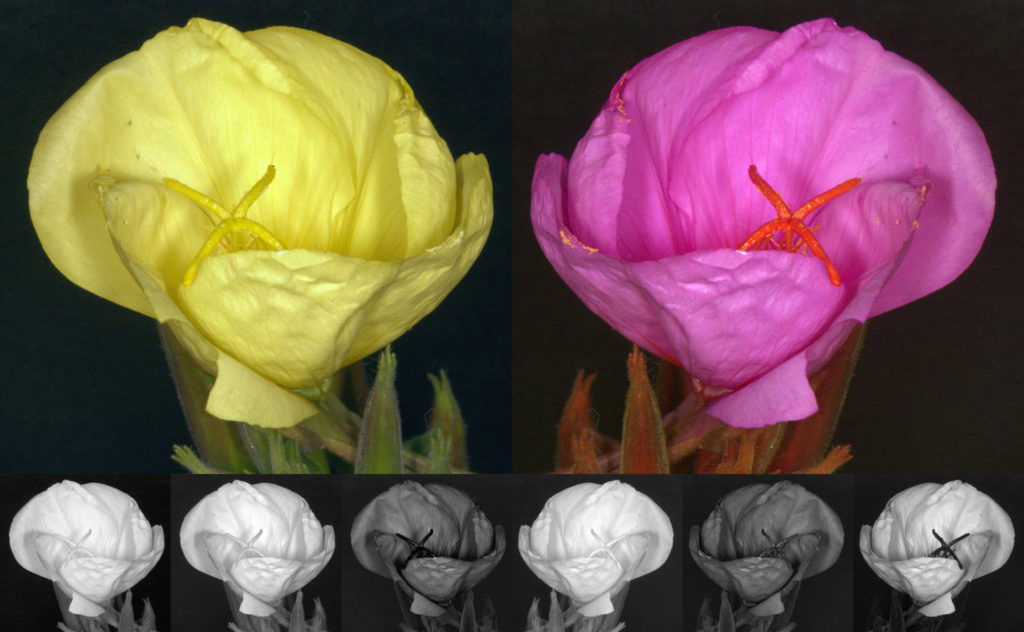
Evening primrose (Oenothera biennis). This is perhaps one of the brightest UV reflecting flowers I’ve come across. Very uniform UV reflectance, but the anthers absorb UV strongly, creating an invisible contrast to humans. 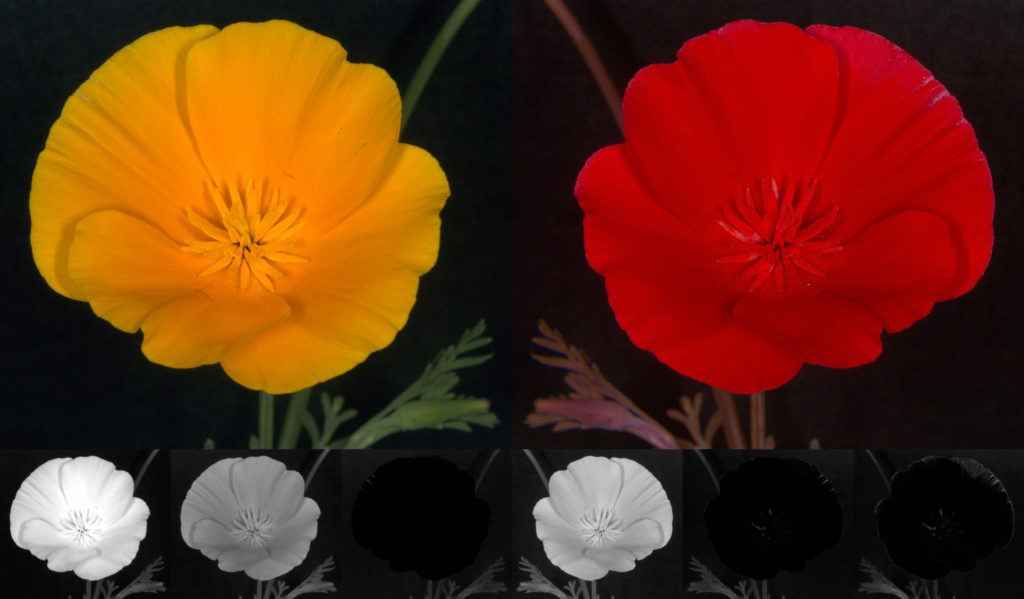
Californian poppy (Eschscholzia californica). I had high hopes that this would look interesting in UV given the lovely shift from yellow to orange in the flower (often associated with UV reflectance). But it absorbs SW and UV incredibly powerfully. This is an example of signalling in UV by being highly absorbent compared to the background. 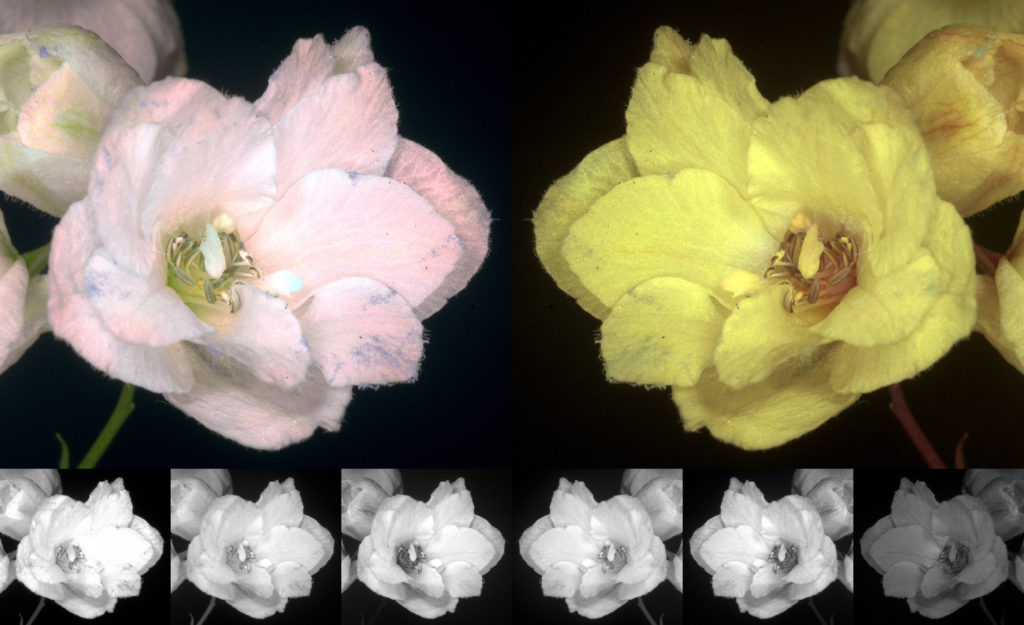
Description
Delphinium (unknown cultivar). This is fairly boring, and is typical of most white flowers; absorbing UV, but not dramatically so.





Be First to Comment